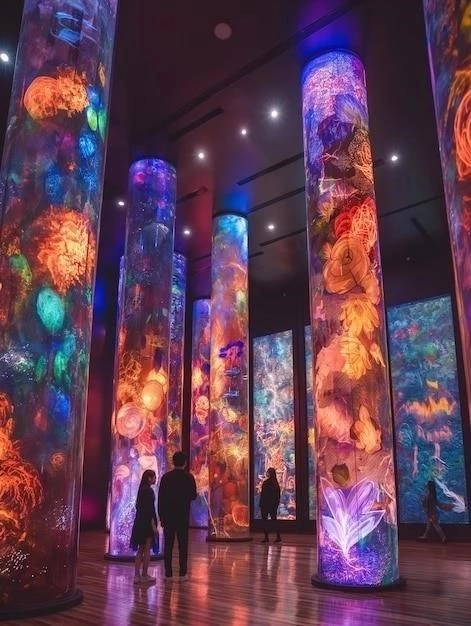A Culinary Journey Through Chinatown’s Rich History
Manhattan’s Chinatown stands as a testament to the enduring legacy of Chinese culinary traditions in New York City. From the predominance of Cantonese fare and its signature dim sum to the emergence of regional cuisines like Szechuan, Hunan, and Taiwanese, Chinatown’s culinary landscape reflects waves of immigration and cultural exchange. This vibrant tapestry of flavors offers a captivating glimpse into the history of Chinese food in America.
The Heart of Chinatown: Exploring Authentic Restaurants
Manhattan’s Chinatown pulsates with a vibrant energy, and at its heart lies a captivating collection of authentic Chinese restaurants. Stepping into these culinary havens is akin to embarking on a journey through the diverse regions of China, each bite offering a tantalizing taste of tradition and culinary artistry.
For a taste of Cantonese classics, Green Garden Village stands as a shining example. A visual feast greets diners as soon as they step inside, with glistening ducks and cured meats on display, hinting at the culinary treasures to come. Their deconstructed wonton soup provides a modern twist on a beloved classic, while their beef chow fun showcases the masterful wok skills of their chefs. Dim sum enthusiasts will find solace in their expertly prepared rice noodle rolls, bursting with savory fillings.
For those seeking a more modern take on Cantonese cuisine, Potluck Club offers a playful and innovative dining experience. Designed to resemble a vintage movie theater, complete with a lobby and screening room, the restaurant sets the stage for a culinary adventure. Their salt-and-pepper chicken, served with scallion biscuits instead of traditional pancakes, exemplifies their creative approach, while their rock shrimp with candied walnuts and cauliflower, generously coated in a creamy mayo, will surprise and delight your taste buds.
Seafood lovers will find their haven at A1, a Flushing transplant that prides itself on its fresh, expertly prepared ocean fare. From whole steamed fish, glistening with ginger and scallions, to tantalizing plates of jumbo shrimp with salted egg sauce, each dish celebrates the natural flavors of the sea. Their razor clams with fresh garlic are a must-try, offering a taste of the ocean’s bounty.
No exploration of Chinatown’s culinary scene would be complete without a visit to one of its many esteemed bakeries. Double Crispy, a newcomer to the neighborhood, has quickly made a name for itself with its tempting array of baked goods. Their fish filet buns and hot dog buns are perfect for a quick bite, while their massive seven-inch steamed baos, filled with savory chicken or pork, offer a more substantial and equally satisfying treat.
Cantonese Cuisine: A Taste of Tradition
Cantonese cuisine, with its emphasis on fresh ingredients, delicate flavors, and masterful cooking techniques, reigns supreme in Manhattan’s Chinatown. For generations, Cantonese immigrants have shaped the neighborhood’s culinary landscape, establishing restaurants that serve as delicious portals to their rich culinary heritage.
One of the hallmarks of Cantonese cuisine is its focus on preserving the natural flavors of ingredients. Chefs employ a light touch, using subtle seasonings and precise cooking methods to enhance rather than mask the inherent tastes of seafood, meats, and vegetables. Stir-frying, steaming, and roasting are favored techniques, ensuring that dishes emerge from the wok or oven bursting with freshness and flavor.
Among the many culinary treasures of Cantonese cuisine, dim sum stands as a beloved tradition. Originating in the teahouses of Southern China, dim sum offers a delightful array of small plates, from delicate dumplings to savory buns, all meant to be shared and savored amongst family and friends. Weekends in Chinatown often begin with families gathering for dim sum, filling their tables with steaming baskets of har gow (shrimp dumplings), siu mai (pork dumplings), and char siu bao (barbecued pork buns).
Beyond dim sum, Cantonese cuisine boasts a diverse repertoire of dishes. Roast meats, like glistening roast duck and crispy-skinned roast pork, are a staple in many Cantonese restaurants, their succulent flavors a testament to generations-old cooking techniques. Wonton noodle soup, with its delicate broth, springy noodles, and savory wontons, offers a comforting and flavorful meal. And for seafood lovers, Cantonese restaurants present an array of fresh catches, prepared with ginger, scallions, and a touch of soy sauce to enhance their natural sweetness.
A visit to Manhattan’s Chinatown is incomplete without indulging in the delights of Cantonese cuisine. From humble noodle shops to grand dim sum parlors, these culinary institutions offer a taste of tradition, a journey through the flavors of a rich and vibrant culinary heritage.

Regional Specialties: From Sichuan Spice to Shanghainese Delights
While Cantonese cuisine holds a prominent place in Manhattan’s Chinatown, the neighborhood also boasts a captivating array of regional Chinese cuisines, each offering a distinct and flavorful exploration of China’s diverse culinary landscape. From the fiery depths of Sichuan peppercorns to the delicate artistry of Shanghainese soup dumplings, these regional specialties tantalize taste buds and showcase the breadth of Chinese culinary traditions.
Sichuan cuisine, known for its bold flavors and liberal use of chili peppers and Sichuan peppercorns, ignites the senses with its signature numbing spice. Dishes like mapo tofu, a fiery combination of silken tofu, minced pork, and a generous dose of chili oil, and dan dan noodles, a symphony of textures and flavors featuring springy noodles coated in a spicy sesame sauce, exemplify the Sichuan proclivity for heat and complexity.
In contrast to Sichuan’s fiery intensity, Shanghainese cuisine captivates with its elegance and subtle sweetness. Soup dumplings, known as xiao long bao, are a Shanghainese specialty, delicate parcels of dough filled with savory broth and a variety of fillings, from succulent pork to delicate crab meat. These culinary marvels require a deft hand to create, the thin skin encasing a flavorful explosion that delights with each bite.
Beyond Sichuan and Shanghainese fare, Manhattan’s Chinatown offers a plethora of other regional specialties. From the hearty hand-pulled noodles of Xi’an to the fragrant curries of Yunnan, culinary adventurers will find a world of flavors to explore. Whether seeking the fiery allure of Sichuan spice or the delicate nuances of Shanghainese cuisine, Chinatown’s regional restaurants offer a captivating journey through the diverse tapestry of Chinese culinary traditions.
Dim Sum: A Culinary Adventure for the Senses
In the heart of Manhattan’s Chinatown, a culinary ritual unfolds each weekend, transforming restaurants into bustling hubs of activity and aroma. Dim sum, the beloved Cantonese tradition of shared plates and steaming baskets, tantalizes the senses and offers a captivating glimpse into the communal spirit of Chinese dining culture.
Picture this: round tables adorned with lazy Susans, their surfaces laden with an assortment of delicacies. Steaming baskets, woven from bamboo, arrive in a steady procession, each revealing a symphony of flavors and textures. The air hums with a gentle cacophony: the clatter of chopsticks, the murmur of conversation, and the occasional joyous exclamation as a particularly delectable morsel is discovered.
Dim sum is more than just a meal; it’s an experience, a culinary adventure shared amongst family and friends. Servers navigate the bustling dining room, pushing carts laden with treasures: delicate har gow (shrimp dumplings), their translucent wrappers revealing plump, succulent shrimp; savory siu mai (pork dumplings), bursting with a savory filling; and char siu bao (barbecued pork buns), their fluffy, white buns encasing sweet and savory barbecued pork.
As each basket arrives, anticipation builds. The lid is lifted, releasing a fragrant puff of steam, and a chorus of “oohs” and “aahs” fills the air. Chopsticks reach out, eager to sample the culinary delights. Dipping sauces, from tangy vinegar to spicy chili oil, stand ready to enhance each bite.
Dim sum is a feast for the eyes as much as it is for the palate. The vibrant colors, delicate textures, and intricate designs of the dishes reflect the artistry and precision of Cantonese culinary traditions. It’s a culinary ballet, a symphony of flavors and sensations that lingers long after the last bite.

Beyond the Plate: Chinatown’s Cultural Gems
While Manhattan’s Chinatown beckons with its culinary treasures, it’s also a neighborhood teeming with cultural riches, a vibrant tapestry woven from centuries-old traditions and the enduring spirit of a community. Beyond the bustling restaurants and enticing aromas, a world of cultural gems awaits, offering a glimpse into the heart and soul of this captivating neighborhood.
Stepping onto Mott Street, the neighborhood’s bustling artery, is akin to stepping into another world. The air thrums with a frenetic energy as vendors hawk their wares, their calls blending with the clang of bicycle bells and the murmur of conversations in a multitude of Chinese dialects. Shop windows display an eclectic array of goods: silken robes, intricate calligraphy sets, and lucky cat figurines beckoning passersby with promises of good fortune.
Tucked away on side streets, amidst the bustling markets and restaurants, lie serene temples, their incense-infused air offering a respite from the urban clamor. Elaborate carvings adorn their facades, depicting mythical creatures and scenes from Chinese folklore. Inside, devotees light incense sticks, their flickering flames casting dancing shadows on the ornate altars.
For a deeper immersion into Chinatown’s cultural heritage, the Museum of Chinese in America (MOCA) provides a captivating journey through the history and contributions of Chinese Americans. Exhibits chronicle the struggles and triumphs of early immigrants, showcasing their resilience and the enduring legacy they built in their adopted homeland.
As evening descends, Chinatown’s streets come alive with a vibrant nightlife scene. Karaoke bars pulsate with music and laughter, while tea parlors offer a more tranquil setting to savor delicate brews and engage in lively conversation. The neighborhood’s theaters host performances of traditional Chinese opera, their elaborate costumes and stylized movements transporting audiences to another time and place.
Manhattan’s Chinatown is a feast for the senses, a vibrant tapestry woven from culinary delights, cultural treasures, and the enduring spirit of a community. It’s a neighborhood where tradition and modernity intertwine, offering a captivating glimpse into the rich heritage of Chinese American culture.

Chinatown’s Markets: A Sensory Overload of Flavors and Aromas
Stepping into the bustling heart of Manhattan’s Chinatown is akin to entering a sensory wonderland, a symphony of sights, sounds, and scents that invigorates the soul. At the core of this sensory immersion lie the neighborhood’s vibrant markets, a testament to the bounty of Chinese culinary traditions and a captivating spectacle for all who enter.
Imagine this: narrow streets teeming with life, sunlight filtering through colorful awnings, casting a warm glow on the spectacle below. Vendors’ calls rise above the din, their voices imbued with a rhythmic cadence, each syllable an invitation to explore the treasures on display. The air hums with a symphony of aromas: the pungent perfume of ginger and garlic, the sweet allure of ripe mangoes and lychees, the delicate fragrance of jasmine tea wafting from nearby tea shops.
Beneath brightly colored awnings, tables overflow with a vibrant tapestry of produce. Leafy greens, their emerald hues almost iridescent, beckon alongside plump bok choy and exotic mushrooms, their shapes as intriguing as their flavors. Glossy eggplants, their deep purple skins shimmering in the sunlight, share space with knobby ginger roots and vibrant green scallions, their pungent aromas filling the air.
Venture deeper into the market’s labyrinthine alleys, and you’ll discover a world of culinary treasures. Live seafood tanks teem with activity, their denizens awaiting their culinary destinies. Glossy ducks hang from hooks, their burnished skin a testament to the art of Cantonese roasting. And within unassuming storefronts, skilled butchers prepare cuts of meat with precision, ensuring each morsel meets the exacting standards of Chinese cuisine.
Chinatown’s markets are a feast for the senses, a vibrant tapestry woven from the sights, sounds, and aromas of a rich culinary heritage. They offer a glimpse into the heart and soul of the neighborhood, a place where tradition and modernity intertwine, and where every visit promises a sensory adventure.
Festivals and Celebrations: Experiencing Chinatown’s Vibrant Culture
Manhattan’s Chinatown pulsates with a vibrant energy year-round, but it’s during its festivals and celebrations that the neighborhood truly comes alive, transforming its streets into a kaleidoscope of color, music, and joyous revelry. These cultural celebrations offer a captivating glimpse into the heart and soul of the community, a chance to witness centuries-old traditions carried out with exuberance and pride.
The Lunar New Year, the most anticipated event on the Chinatown calendar, ushers in the new year with a vibrant spectacle of parades, lion dances, and firecracker displays. Crowds line the streets, their cheers mingling with the rhythmic beat of drums and the clash of cymbals as elaborately costumed performers weave their way through the throng. Red and gold, symbols of prosperity and good fortune, adorn every storefront, infusing the air with a palpable sense of hope and renewal.
As spring arrives, Chinatown celebrates the Lantern Festival, a dazzling display of illuminated lanterns that illuminate the night sky. Intricately crafted lanterns, depicting mythical creatures, animals, and scenes from Chinese folklore, transform the neighborhood into a magical wonderland. Families stroll through the streets, their faces aglow with the lanterns’ soft light, while children marvel at the artistry and ingenuity of these luminous creations.
Autumn brings the Mid-Autumn Festival, a time for families to gather and celebrate the harvest moon. Mooncakes, intricate pastries filled with sweet bean paste or lotus seed paste, take center stage during this joyous occasion, their round shapes symbolizing unity and completeness. As the full moon rises, families and friends gather in parks and open spaces, sharing mooncakes and stories beneath the celestial glow.
Chinatown’s festivals and celebrations offer a vibrant tapestry of cultural experiences, a chance to witness the enduring legacy of Chinese traditions and the unwavering spirit of a community. They are a testament to the power of culture to unite, inspire, and create lasting memories.
The Evolution of Chinatown: From Humble Beginnings to a Thriving Community
Manhattan’s Chinatown, a vibrant tapestry of culture and commerce, stands as a testament to the resilience and entrepreneurial spirit of Chinese immigrants who sought a better life in a new land. Its story is one of humble beginnings, enduring hardship, and the unwavering pursuit of opportunity, ultimately transforming a small enclave into a thriving community that continues to captivate and inspire.
The seeds of Chinatown were sown in the late 19th century, as waves of Chinese immigrants, primarily from Guangdong province, arrived on American shores seeking work and opportunity. Facing prejudice and limited prospects in other parts of the city, they established a foothold in a small section of Lower Manhattan, creating a community where they could speak their language, practice their traditions, and support one another.
Early Chinatown was a neighborhood of tenements and small businesses, its streets bustling with vendors selling imported goods, silks, and teas. Restaurants, initially catering to the tastes of fellow immigrants, soon became culinary destinations, introducing New Yorkers to the exotic flavors of Cantonese cuisine. As the community grew, so too did its institutions: temples, theaters, and community organizations emerged, providing a sense of belonging and cultural continuity in a foreign land.
Over the decades, Chinatown faced its share of challenges: economic downturns, discriminatory legislation, and the ever-present threat of gentrification. Yet, through it all, the community persevered, its residents demonstrating remarkable resilience and determination. They adapted to changing times, embracing new opportunities while preserving the traditions and values that lay at the heart of their identity.
Today, Manhattan’s Chinatown stands as a thriving testament to the Chinese American experience, a vibrant blend of tradition and modernity. Its streets, once home to a small group of immigrants seeking refuge, now welcome visitors from around the globe, eager to experience the sights, sounds, and flavors of this dynamic neighborhood.

Chinatown’s Future: Preserving Tradition While Embracing Change
Manhattan’s Chinatown, a neighborhood steeped in history and tradition, stands at a crossroads, navigating the complexities of preserving its cultural heritage while adapting to the ever-evolving dynamics of urban life. As new generations inherit the legacy of their predecessors, they face the challenge of honoring the past while shaping a future that reflects the dynamism and diversity of the Chinese American experience.
One of the most pressing issues facing Chinatown is the preservation of its physical landscape. Soaring rents and the pressures of gentrification threaten the existence of long-standing businesses, pushing out the very residents and entrepreneurs who have given the neighborhood its unique character. Efforts to combat these forces are underway, with community organizations advocating for affordable housing, supporting small businesses, and promoting policies that prioritize the needs of longtime residents.
Beyond preserving its physical space, Chinatown also grapples with the challenge of passing on its cultural traditions to younger generations. As the demographics of the neighborhood shift, ensuring the continuity of language, customs, and culinary heritage becomes paramount. Cultural institutions, language schools, and community centers play a vital role in bridging the generational divide, fostering a sense of pride in Chinese American identity and inspiring future generations to become stewards of their cultural legacy.
Despite the challenges, Chinatown’s future is bright. The neighborhood’s entrepreneurial spirit, its deep sense of community, and its ability to adapt to changing times all point to a resilient and dynamic future. As new generations add their voices and visions to the tapestry of Chinatown, they bring fresh perspectives and innovative ideas, ensuring that the neighborhood remains a vibrant hub of culture, commerce, and community for generations to come.










